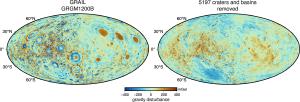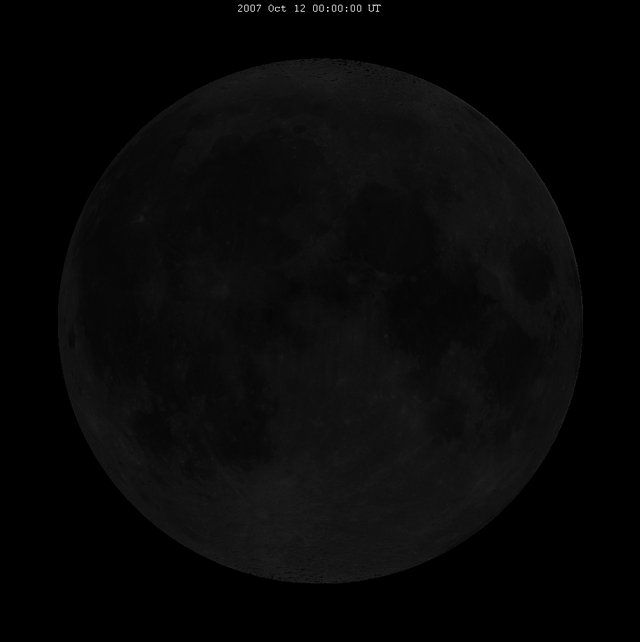Blog
Wandering Wanderer
24 September 2022
 Smith, et al
Smith, et alUntil 1959, humans had only seen one side of the Moon. The Moon is tidally locked with Earth, and so we can only see one side from the Earth’s surface. It took the soviet Luna 3 spacecraft to capture a blurry image for humans to get their first glimpse of the lunar far side. Because of this, many people imagine that the Moon has always been this way. But as a recent study shows, that isn’t quite true.1
 NASA
NASAAlthough the Moon is tidally locked with Earth, it isn’t physically locked to Earth. It is still a freely moving body that rotates on its axis. The Moon always shows the same side to Earth because its period of axial rotation and its orbital period is the same. But even this isn’t an exact match. The Moon’s rotation is essentially constant, but its orbit isn’t exactly circular. So the Moon moves along at a bit faster or slower rate depending on where it is in its orbit. This makes the moon appear to wobble back and forth slightly. There’s also the fact that the Moon’s rotational axis is tilted slightly relative to its orbital plane around the Earth, and the orbit itself is tilted slightly relative to the Earth’s equator. All of this together gives the Moon a small but complex wobbly dance as seen from Earth, known as libration. So over the course of a few years, we actually see slightly more than half the lunar surface, though this effect is too small to notice in our daily lives.
 Tom Ruen, via Wikipedia
Tom Ruen, via WikipediaBut because the Moon is a freely moving body, its rotational axis can shift from other things as well. For example, geological activity such as the drift of continents, and the freezing or melting of polar caps cause shifts in our rotational axis. It even shifts the length of our days slightly. But the Moon isn’t really geologically active, and it doesn’t have weather patterns to freeze or melt polar caps. But it has been bombarded by asteroids over the years, and that brings us to this latest study.
The team looked at high-resolution gravity maps of the Moon taken by NASA’s Gravity Recovery and Interior Laboratory (GRAIL). These maps give us a good idea of the distribution of mass within the Moon, since the more mass you have in a given area, the higher the gravity. They also used a detailed map of lunar craters captured by the Lunar Reconnaissance Orbiter (LRO) and its Lunar Orbiter Laser Altimeter (LOLA). They then used computer models to “remove” the craters’ age layer by age layer.
Since a crater shifts the mass distribution slightly, it also shifts the Moon’s axis of rotation slightly. The team basically rewound the clock for about 5,200 crater impacts spanning more than 4 billion years of history. They found that the Moon’s orbital axis has shifted by about 10 degrees in that time. That might seem like much, but it’s pretty impressive to track the Moon’s rotation over billions of years. In the future, the team would like to include more data, including effects such as early volcanic eruptions.
Smith, David E., et al. “The Contribution of Small Impact Craters to Lunar Polar Wander.” The Planetary Science Journal 3.9 (2022): 217. ↩︎